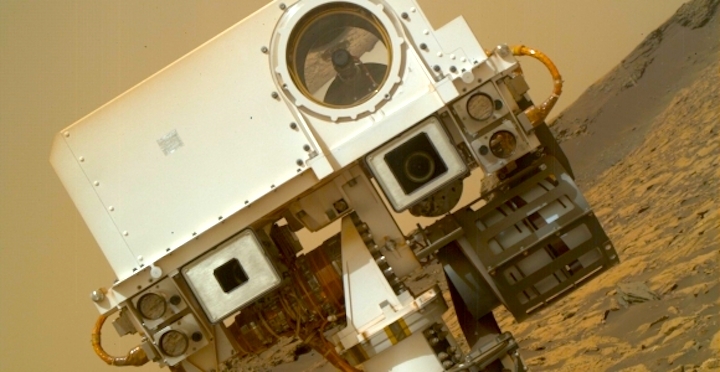9.10.2017

Now operating well beyond its two-year prime mission, the Curiosity rover and its two instruments with French participation, SAM and ChemCam, have now been exploring the surface of Mars for five years, making a series of discoveries such as traces of ancient rivers and a delta that flowed into a lake with a neutral pH and water at temperatures as balmy as 30°C and more. Drilling into the bed of the former lake, Curiosity has detected mineral veins suggesting that water was circulating underground over a long period of time and has catalogued the origin of deposited sediments, revealing that conditions might have existed for Mars to be habitable and changing our perspective of the planet forever. The rover has climbed the slopes of Mount Sharp towards clay-bearing layers that scientists plan to study to determine how long water could have persisted on Mars and in what conditions, and are thus gradually piecing together the planet’s history.
These extraordinary advances were aided by the ChemCam laser camera developed with participation by CNES, CNRS and the University Paul Sabatier through their astrophysics and planetology research institute. Perched atop the rover’s mast, it enables engineers at the French Instruments Mars Operations Centre (FIMOC) at CNES in Toulouse to monitor and task the instruments and receive and process science data. Every day, a global team of 120 scientists—geologists, biologists, mineralogists and atmospheric experts—coordinates with the FIMOC and the Los Alamos National Laboratory (LANL) to point ChemCam’s laser at its next target on Mars.
Wednesday 20 September, the team fired the laser for the 500,000th time. This symbolic achievement is the latest milestone in a unique scientific and technological adventure that has seen 15,000 individual measurements made, over 10 000 images collected and more than 50 scientific papers published, constituting an unprecedented record of the composition of Mars’ surface.
Built by Thales with oversight from CNES, the ChemCam laser is the most powerful laser to operate on the surface of another planet. The burst of infrared light it fires lasts only a few billionths of seconds, but it is powerful enough to vaporize the spot it hits at more than 8,000°C. Once the next day’s work plan has been decided, the FIMOC sends the commands for ChemCam to NASA's Jet Propulsion Laboratory (JPL), which uploads them to the rover.
Commenting on this latest accomplishment, CNES President Jean-Yves Le Gall said: “Mars Science Laboratory, developed by NASA in partnership with CNES, is undoubtedly the most ambitious mission to explore the red planet ever. In 2020, a new Mars rover will be launched carrying SuperCam, the successor to ChemCam. This new camera will be able to detect organic molecules indicating possible traces of past life. Through such pioneering work on Mars exploration, CNES is once again inventing the future of space.”
Quelle: CNES
